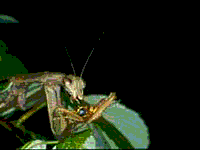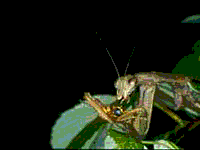|
.
|
Where:

|
Strength In This Field
Collection:

|
More Info:

|
.
|
|
|
|
|
|
|
|
.
|

Macleay
Museum
Sydney
Australia
.
|
 The Macleay Collections house over half a million
Insect
specimens
dating from 1756.
The Macleay Collections house over half a million
Insect
specimens
dating from 1756.
|

|
.
|
|
.
|

Museums
of Natural
History
Copenhagen
(Faculty of Science, University of Copenhagen)
Denmark
|
 Department
of Entomology. has
collections that include insects and other terrestrial
arthropods: myriapods and arachnids (but not terrestrial
crustaceans). The collections include more than 3 million
pinned insects plus a similar number of alcohol-preserved
specimens; they thus range among the largest in Europe. All
regions of the World are covered, but some areas are
particularly well-represented. This is true of Denmark, the
Faroe Islands, Iceland, and Greenland for all groups; of the
Philippine and Bismarck Islands for most insects groups; and
of further geographical areas for particular groups as
specified below. Important acquisitions are due to recent
collecting efforts by staff members in Denmark, Greenland,
Spain, Greece, Turkey, Tunisia, Morocco, South India,
Thailand, Tanzania and southern Argentina/Chile. A large
proportion of the holdings (in particular but not
exclusively Danish Lepidoptera and Coleoptera) derive from
amateurs' collections which have been donated to the Museum.
The number of identified species in the collections totals
about 100,000, i.e., about 10% of the described species.
There are about 10,500 primary types.
Department
of Entomology. has
collections that include insects and other terrestrial
arthropods: myriapods and arachnids (but not terrestrial
crustaceans). The collections include more than 3 million
pinned insects plus a similar number of alcohol-preserved
specimens; they thus range among the largest in Europe. All
regions of the World are covered, but some areas are
particularly well-represented. This is true of Denmark, the
Faroe Islands, Iceland, and Greenland for all groups; of the
Philippine and Bismarck Islands for most insects groups; and
of further geographical areas for particular groups as
specified below. Important acquisitions are due to recent
collecting efforts by staff members in Denmark, Greenland,
Spain, Greece, Turkey, Tunisia, Morocco, South India,
Thailand, Tanzania and southern Argentina/Chile. A large
proportion of the holdings (in particular but not
exclusively Danish Lepidoptera and Coleoptera) derive from
amateurs' collections which have been donated to the Museum.
The number of identified species in the collections totals
about 100,000, i.e., about 10% of the described species.
There are about 10,500 primary types.
.
|

|
.
|
|
.
|

The
Provincial Museum of
Alberta
Edmonton,
Alberta, Canada
.
|
 The Invertebrate Zoology department has a
collection
of some 200,000 specimens of the world wide collection of
Aculeate Hymenoptera (bees and wasps). There are smaller
collections of Coleoptera (beetles), Lepidoptera
(butterflies and moths) and minor collections of most of the
other orders of insects. Live insects are being displayed in
the Bug
Room.
The Invertebrate Zoology department has a
collection
of some 200,000 specimens of the world wide collection of
Aculeate Hymenoptera (bees and wasps). There are smaller
collections of Coleoptera (beetles), Lepidoptera
(butterflies and moths) and minor collections of most of the
other orders of insects. Live insects are being displayed in
the Bug
Room.
|

|
.
|
|
.
|

Natural
History Museum of
Maastrich
Province of Limburg,
Maastricht
The Netherlands
|
 The entomology collection comprises a large number of
subcollections in the field of insects and spiders. The
principal collections are those of ants, termites and
myrmecophiles, of grasshoppers and crickets and of
butterflies.
The entomology collection comprises a large number of
subcollections in the field of insects and spiders. The
principal collections are those of ants, termites and
myrmecophiles, of grasshoppers and crickets and of
butterflies.
- Ants,
Termites &
Myrmecophiles -
The collection comprises, in addition to more than 1,000
ant species and in excess of 200 termite species, more
than 2,000 species of myrmecophiles. Most specimens are
dried but some of them are preserved in alcohol. Also the
collection has a unique collection of beetles,
butterflies, mites, bugs and aphids which lived in ant
nests.
- Grasshoppers
and Crickets -
This collection is a heterogeneous lot of grasshoppers,
crickets, mole crickets, cockroaches, praying mantis,
stick insects and leaf insects. The collection comprises
no fewer than 129 holotypes and many dozens of paratypes.
Some twenty genera and species have been named after
Willemse to honour or thank him for his help with
identifications. The collection includes a library of
5,000 titles.
- Butterflies
- This collection which takes up most of the space in the
insect storage is comprised of more than 60,000
specimens, mainly from Limburg and adjacent areas.
Together they form an invaluable record of the
distribution of the various species over the years and of
the variation within the various species
.
|

|
.
|
|
.
|

"Grigore
Antipa" National Museum of Natural
History
Bucharest,
Romania
.
|
 The Museum houses some 250,000 Lepidopterans specimens and
some 100,000 Coleopterans specimens.
Also some thousands or tens of
thousands are included in the collections of: Hymenoptera,
Heteroptera, Diptera, Orthoptera, Homoptera, and
Odonata.
The Museum houses some 250,000 Lepidopterans specimens and
some 100,000 Coleopterans specimens.
Also some thousands or tens of
thousands are included in the collections of: Hymenoptera,
Heteroptera, Diptera, Orthoptera, Homoptera, and
Odonata.
|

|
.
|
|
.
|

Albany
Museum
Grahamstown
South Africa
|
 The insect
collection numbers
c. 250 000 specimens, the majority of which are pinned. Some
14 000 specimens of Thysanoptera are slide-mounted. The
largest collection is that of aculeate wasps and bees,
numbering c 160 000. The provenance of the specimens is in
the main southern African. Some exotic material is included,
most notably aculeates from Arizona and Australia. The
established field of research of the department is the study
of aculeate wasps and bees.
The insect
collection numbers
c. 250 000 specimens, the majority of which are pinned. Some
14 000 specimens of Thysanoptera are slide-mounted. The
largest collection is that of aculeate wasps and bees,
numbering c 160 000. The provenance of the specimens is in
the main southern African. Some exotic material is included,
most notably aculeates from Arizona and Australia. The
established field of research of the department is the study
of aculeate wasps and bees.
.
|

|
.
|
|
.
|

Natural
History Museum
Berne
Switzerland
|
 The Entomology section of the
Invertebrate
Collections contain
the following material:
The Entomology section of the
Invertebrate
Collections contain
the following material:
- Lepidoptera of the world
(~57,000)
- Lepidoptera of
Switzerland (~125,000; 90 type
specimens)
- Coleoptera of Switzerland
(~115,200)
- Coleoptera of the world
(~16,000, paratype specimens)
- Diptera of Switzerland
(~2,000+1,300 samples)
- Odonata of Switzerland
(~3,000+13,000 exuvia)
- Hymenoptera of
Switzerland (~22,500)
- Hymenoptera of Brazil
(1,436, with 100 Adolpho Ducke types and
paratypes)
|

|
.
|
|
.
|

Natural
History Museum
Fribourg
Switzerland
|
 The Insect Invertebrate
Collections contain
the following material
The Insect Invertebrate
Collections contain
the following material
-Swiss coleopterous
(with a holotype)
-Systematic collection of Swiss colepterous
-Systematic collection of butterflies of the world
-Butterflies of the canton of Fribourg
.
|

|
.
|
|
.
|

The
Academy of Natural Sciences
Philadelphia, PA,
USA
.
|
. The Entomology
Department houses
some 3,250,000 insect specimens. With the largest collection
in the world of grasshoppers and crickets, the Academy's
Entomology Department pioneered the placement of a catalog
of all known species of a major group of insects on the
Internet. The Orthoptera
Species
File (OSF)
provides direct access to data on one of the most
economically important species - grasshoppers, perennially
one of man's worst competitors for crops. The OSF contains
complete taxonomic and synonomic information for all species
and genera of Orthoptera, including text, images and sound
recordings.
The Entomology
Department houses
some 3,250,000 insect specimens. With the largest collection
in the world of grasshoppers and crickets, the Academy's
Entomology Department pioneered the placement of a catalog
of all known species of a major group of insects on the
Internet. The Orthoptera
Species
File (OSF)
provides direct access to data on one of the most
economically important species - grasshoppers, perennially
one of man's worst competitors for crops. The OSF contains
complete taxonomic and synonomic information for all species
and genera of Orthoptera, including text, images and sound
recordings.
.
|

|
.
|
|
|
|
|
|
|
|
|
|
|
|
|

